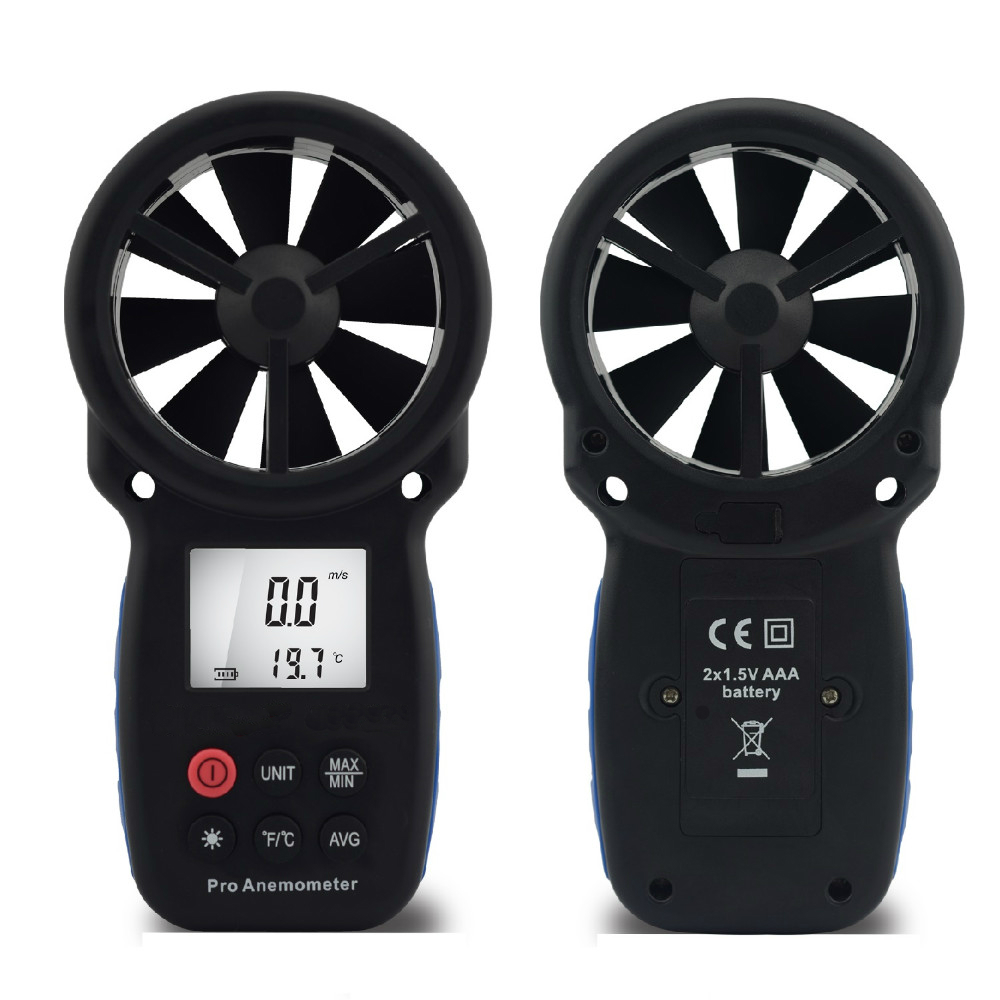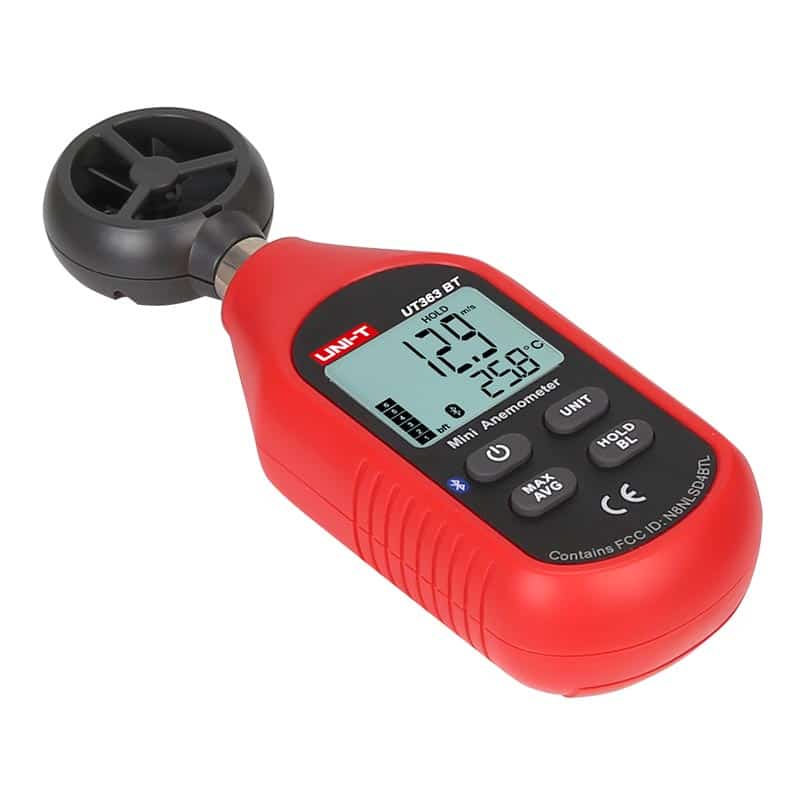Anemometer Innovations: The Most Recent Innovation for Wind Rate Measurement
Wiki Article
Anemometers Revealed: Comprehending Their Relevance in Ecological Tracking and Precaution
The function of anemometers in environmental surveillance and precaution is usually undervalued, yet their value is undeniable. These instruments have a long background rooted in clinical query and technological advancements, evolving to become crucial devices in different fields. From meteorology to aeronautics security, anemometers play a vital function in providing exact data that notifies decision-making procedures and improves general security. Understanding the intricacies of anemometers introduces a globe of vital insights that are basic to our understanding of the atmosphere and the measures we take to make sure safety.Background of Anemometers
The evolution of anemometers can be traced back to the old civilizations where basic wind gauging gadgets were first made use of. These early wind dimension tools laid the structure for the development of extra innovative anemometers in time. Among the earliest well-known anemometers was the hemispherical cup anemometer designed by Leon Battista Alberti in the 15th century. This style consisted of 4 hemispherical mugs that collected wind energy, giving a measurement of its intensity based on the rate of turning.In the 18th century, the prominent researcher John Thomas Romney Robinson introduced the Robinson anemometer, which included four hemispherical cups placed on horizontal arms that prolonged from a main axis. This design came to be a criterion in atmospheric measurements due to its accuracy and dependability. Throughout the years, innovations in technology led to the advancement of more modern anemometers, including ultrasonic anemometers and laser Doppler anemometers, offering increased precision and efficiency in measuring wind rate and instructions. The background of anemometers showcases an impressive trip of technology and progression in the field of weather forecasting.
Kinds Of Anemometers
Throughout the field of meteorology, numerous sorts of anemometers have actually been created to properly gauge wind rate and direction. The most common type is the mug anemometer, which includes 3 or 4 mugs placed on straight arms that rotate with the wind. As the cups spin, the rate at which they revolve is straight proportional to the wind speed. An additional commonly used type is the vane anemometer, which features a tail or fin that aligns itself with the wind instructions. This positioning enables the gadget to identify the wind direction. Sonic anemometers use ultrasonic signals to gauge wind rate and direction accurately. They are commonly used in research study applications due to their high accuracy. Hot-wire anemometers run based on the principle that the cooling effect of wind on a warmed cord is proportional to the wind speed. These anemometers are appropriate for gauging reduced wind speeds with high precision. Each type of anemometer has its strengths and is chosen based on the specific requirements of the tracking task handy.Applications in Weather Forecasting
Having gone over the numerous types of anemometers made use of in meteorology for determining wind speed and direction, it is vital to discover their useful applications in the area. Anemometers play an essential function in meteorology by giving real-time and precise data on wind conditions (anemometer). Meteorologists use anemometers to keep track of wind rate and instructions to anticipate climate patterns, concern cautions for serious climate events like tornadoes, tornados, and typhoons, and assess atmospheric conditions for aviation safety and securityIn meteorology, anemometers help in comprehending regional and local wind patterns, which are crucial for forecasting weather condition modifications and figuring out weather fads. These devices are additionally used in see here now research to study microclimates, city warmth islands, and air pollution dispersion. Furthermore, anemometers are used in farming to optimize plant monitoring methods, such as watering and pesticide application, based upon wind problems.
Importance in Aeronautics Safety And Security
An integral facet of guaranteeing air travel safety and security hinges on the meticulous monitoring of wind problems making use of anemometers. Anemometers play an here are the findings important role in air travel by providing real-time data on wind rate and instructions, aiding pilots in making educated decisions during trip, landing, and take-off. Strong and uncertain winds can dramatically influence aircraft procedures, making it crucial for aeronautics authorities to count on accurate wind dimensions to make sure the safety of guests and staff.
In the dynamic atmosphere of air travel, where even minor modifications in wind rate and direction can have profound results, anemometers stand as crucial tools for advertising risk-free and secure flight.
Role in Environmental Research
Anemometers play a crucial role in environmental research by offering important data on wind speed and direction. By accurately determining wind attributes, anemometers assist researchers examine the motion of toxins in the air, analyze the influence of commercial exhausts, and forecast the spread of impurities in the setting.

Conclusion
In verdict, anemometers have actually played a vital function in environmental monitoring and safety and security procedures. Comprehending the relevance of anemometers is crucial for properly determining wind rate and instructions, which is vital for anticipating weather patterns, making certain risk-free aviation operations, and performing environmental researches.One of the earliest recognized anemometers was the hemispherical mug anemometer invented by Leon Battista Alberti in the 15th century. Over the years, innovations in innovation led to the growth of more modern-day anemometers, including ultrasonic anemometers and laser Doppler anemometers, offering enhanced accuracy and performance in determining wind speed and instructions. Hot-wire anemometers operate based on the principle that the cooling result of wind on a heated cable is symmetrical to the wind rate. Meteorologists use anemometers to keep an eye on wind rate and direction to forecast weather condition patterns, concern warnings for serious weather condition occasions like typhoons, twisters, and tornados, and analyze climatic problems for aviation safety.
Comprehending the relevance of anemometers is crucial for properly measuring wind speed and direction, which is important for anticipating weather condition patterns, making sure secure aeronautics procedures, and performing ecological researches. (anemometer)
Report this wiki page